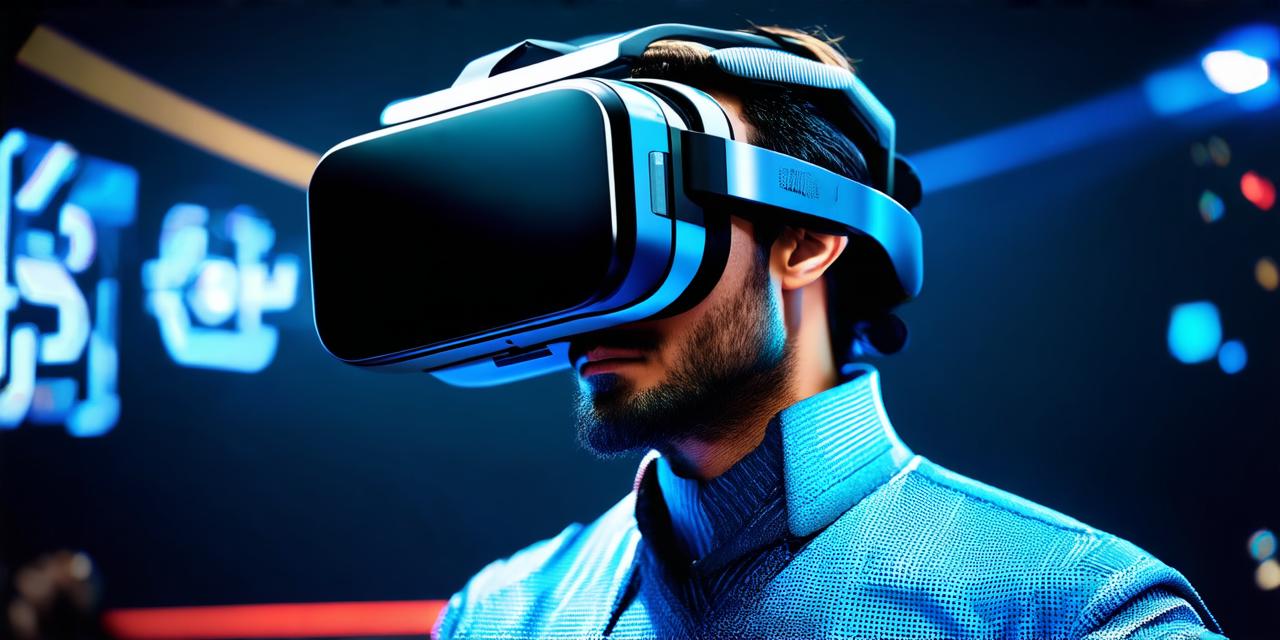Virtual reality (VR) technology has come a long way since its inception, and it is rapidly changing the way we experience the world around us. From gaming to healthcare, education to tourism, virtual reality has the potential to revolutionize many industries.
Hardware Advancements:
One of the biggest advancements in VR hardware has been the development of wireless headsets. These headsets eliminate the need for cables and allow users to move more freely while using the technology. This has greatly improved the user experience, as users can now move around without worrying about getting tangled up in wires. Additionally, advancements in display resolution have made it possible to create more realistic visuals. Some high-end headsets now have 4K resolution displays, which are capable of rendering highly detailed and lifelike graphics.
Another hardware advancement is the development of hand tracking technology. This technology allows developers to track the movements of a user’s hands in real-time, making it possible to create more interactive and immersive experiences. Hand tracking technology has already been implemented in some popular VR games, such as “Beat Saber” and “Job Simulator.” With the ability to accurately track hand movements, developers can create more realistic interactions with virtual objects, allowing users to interact with the environment in a more natural way.
Software Advancements:
In addition to hardware advancements, software developments have also played a major role in the evolution of VR technology. One of the most significant advancements is the development of haptic feedback technology. This technology allows users to feel physical sensations in virtual environments, making the experience more realistic and immersive. Haptic feedback can be used to simulate a wide range of sensations, from the vibration of a phone to the sensation of water on your skin.
Another software advancement is the development of social VR platforms. These platforms allow multiple users to interact with each other in a virtual environment, opening up new possibilities for social interaction and collaboration. Examples of social VR platforms include “Facebook Horizon” and “Rec Room.” With social VR platforms, users can create their own virtual worlds and invite friends to join them, providing a unique way to connect with others online.
Applications for Developers:
The potential applications for VR technology are endless, and developers have the opportunity to be at the forefront of this exciting industry. Here are a few examples of how VR technology can be applied in different industries:
Gaming:
Virtual reality has already revolutionized the gaming industry, with games like “Beat Saber” and “Job Simulator” becoming instant classics. Developers have the opportunity to create even more immersive and interactive gaming experiences using new hardware and software advancements. For example, developers can use hand tracking technology to allow users to interact with virtual objects in a more natural way, or use haptic feedback to simulate the sensation of different weapons or weapons effects.
Healthcare:
Virtual reality technology has the potential to revolutionize healthcare by allowing doctors and patients to simulate medical procedures in a safe and controlled environment. This can help reduce the risk of complications and improve patient outcomes. Additionally, VR technology can be used to provide therapy for patients with conditions such as PTSD, phobias, and chronic pain. For example, patients can use VR to expose themselves to triggering situations in a controlled environment, helping them overcome their fears and reduce symptoms.
Education:
Virtual reality technology can also be applied in education to create more immersive and engaging learning experiences. For example, students can take virtual field trips to different parts of the world or explore historical events in a more interactive way. Additionally, VR technology can be used to provide training for professionals in fields such as medicine, engineering, and aviation. This allows students to gain hands-on experience in a safe and controlled environment, providing them with valuable skills and knowledge.
Tourism:
Virtual reality technology has the potential to revolutionize the tourism industry by allowing people to experience different parts of the world from the comfort of their own homes. This can be especially useful for individuals who are unable to travel due to financial or physical limitations. Additionally, VR technology can be used to create virtual tours of museums and other cultural institutions, providing users with a unique and immersive way to learn about different cultures.
Conclusion:
Virtual reality technology has come a long way since its inception, and it is rapidly changing the way we experience the world around us. With new hardware and software advancements, developers have the opportunity to create even more immersive and interactive experiences. From gaming to healthcare, education to tourism, VR technology has the potential to revolutionize many industries, providing users with valuable skills and knowledge while also allowing them to explore new worlds and cultures in a safe and controlled environment.
